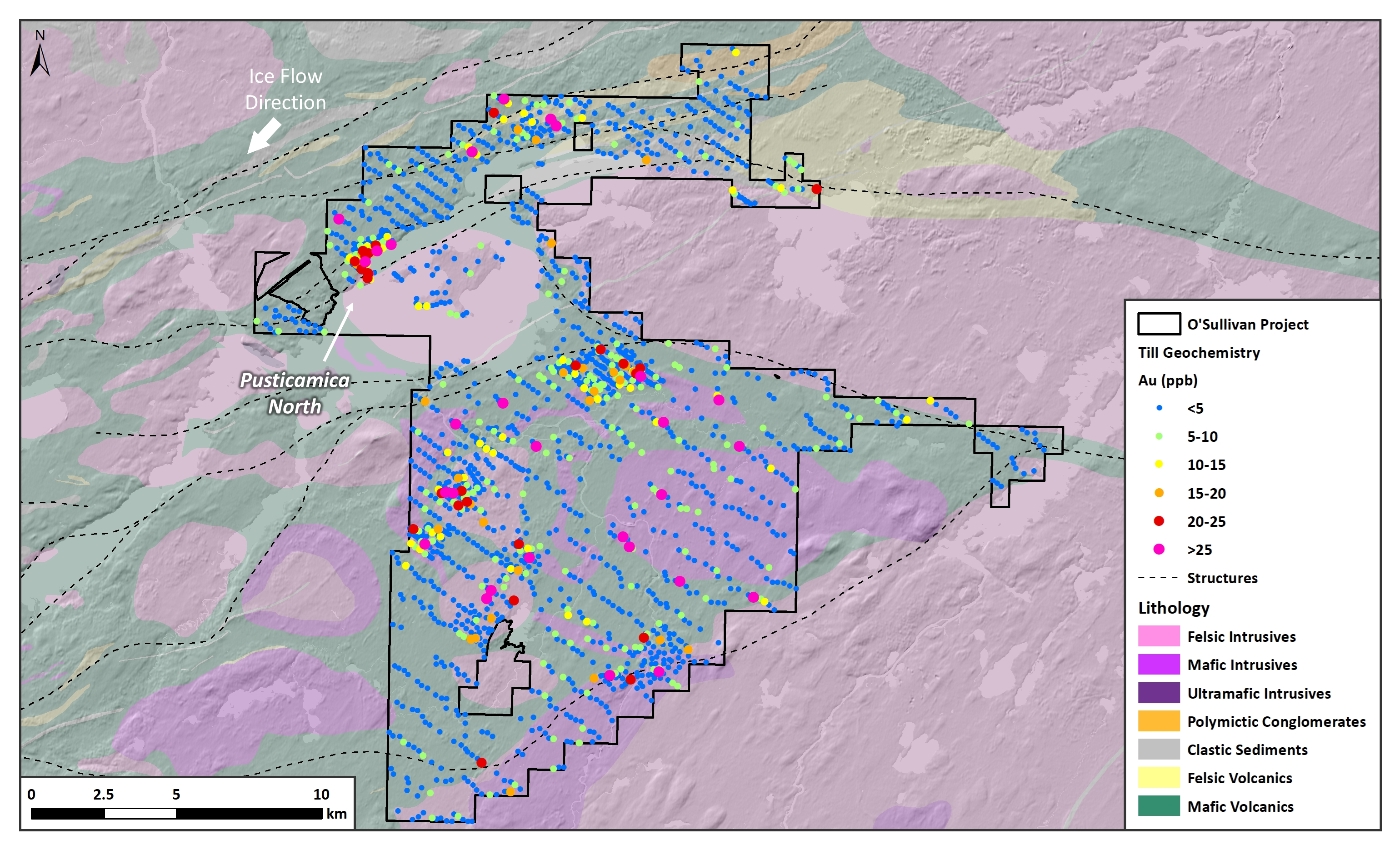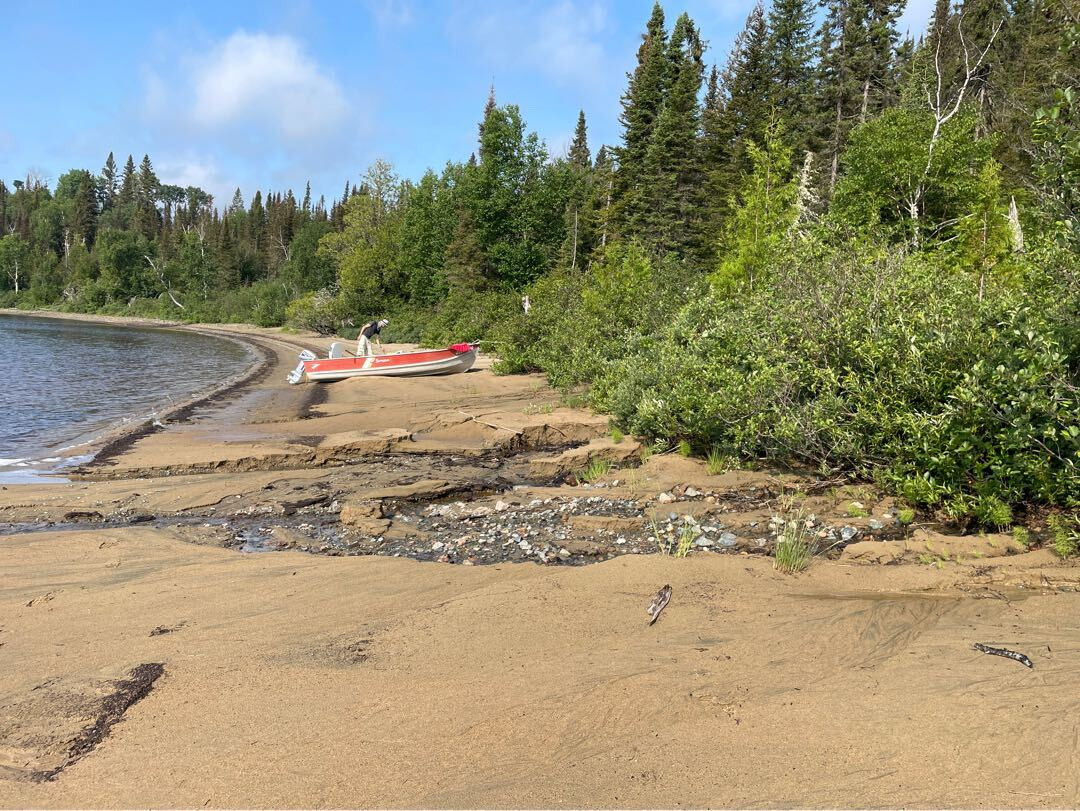LOCATION
Quebec, Canada
SIZE
27,979 ha
STAGE
Grassroots
DEPOSIT TYPE(S)
Orogenic Au, Intrusion-related Au
The O’Sullivan Project covers 27,979 hectares of mineral tenure within the Abitibi Greenstone Belt (AGB) along the Casa Berardi Deformation Zone (CBDZ). The CBDZ is one of the primary structures that controls orogenic gold mineralisation in the belt and hosts the active Casa Berardi mine that has produced over 1.9 million ounces of gold since 1988, with recent proven and probable reserves of 1.7 million ounces (December 31, 2019). Other major deposits along the CBDZ include the Douay gold deposit (2.35 million oz Au inferred and 422,000 oz Au indicated) as well as the Nelligan gold deposit, having a 3.2 million ounce inferred resource (October 22, 2019). The O’Sullivan Project covers approximately 15 kilometers of strike length along the southern margin of the CBDZ where the deformation zone intersects volcanic rocks of the Stoughton-Roquemaure and Kidd-Munro assemblages.
Location and Access
The Project is located approximately 50 kilometers east of the city of Lebel-sur-Quévillon and 150 kilometers northeast of Val-d’Or, Quebec. Local infrastructure includes a power transmission line transecting the property, a railway line approximately five kilometers to the north of the Project, and an extensive network of logging roads throughout the property.
Geology and Mineralisation
The geology of the O’Sullivan Project consists of volcanic rocks belonging to the Stoughton-Roquemaure and Kidd-Munro volcanic assemblages. The geology in the northwestern portion of the property, associated with the CBDZ, is marked by polymictic conglomerates and clastic sedimentary basins which have been moderately to strongly strained. Within the central and southern portion of the Project the geology mainly consists of mafic volcanic rocks, and felsic to mafic intrusive rocks, primarily interpreted from magnetic data. Bedrock exposure throughout the property is scarce as most of the Project area is concealed by glacial till and sediments.
Exploration History
The O’Sullivan Project has seen very limited modern exploration when compared to other areas of the Abitibi Greenstone Belt. Most of the historical exploration consisted of diamond drilling (59 drill holes totaling 9,504m) which targeted geophysical anomalies in the northern portion of the property. Within the central and east portion of the Project limited glacial till sampling identified strong gold anomalism in till substrate however limited follow-up work was documented. The southern portion of the Project remained largely unexplored with only a few drill holes which targeted discreet geophysical anomalies.
Summary of exploration activities conducted by Kenorland Minerals
In 2019, the Company acquired the O’Sullivan Project through map staking.
In September 2020, a LIDAR survey was completed and used to plan a property-wide surface geochemical survey. In the summer of 2020, 1,322 B-horizon till samples were collected on a 1000m by 200m grid as a first pass reconnaissance-style program with the objective of identifying geochemical anomalism within the glacial till cover.
During October of 2021, a follow up till sampling program was completed, infilling six target areas which were identified during the initial 2020 geochemical survey. The infill soil sampling was completed on a 50m by 250m grid with a total 487 soil samples collected.
Detailed electromagnetic (EM), IP and drone magnetic geophysical surveys were carried out in the spring of 2023, covering the coherent gold-in-till anomalism on the north shore of Lac Pusticamica. A lake sediment geochemical survey was completed in the summer of 2023 to assist in future drill targeting.
In the winter of 2024, Kenorland completed a maiden drill program of 5 drillholes for 3,801 meters of drilling at the Pusticamica North target area. Hole 24OSDD001 identified visible gold at 475m depth and returned 56.80 g/t Au and 23.60 g/t Ag over 0.30m core length associated with a brecciated quartz-calcite-sulphide vein. The remaining 4 holes identified a large syenite dike swarm characterised by variable hematite-silica alteration within volcanic rocks associated with silica-sericite-calcite-albite alteration but did not return any significant mineralisation. The O’Sullivan Project is held under an earn-in agreement with Sumitomo Metal Mining Canada Ltd. Kenorland, along with Sumitomo, is currently evaluating next steps for the project.





